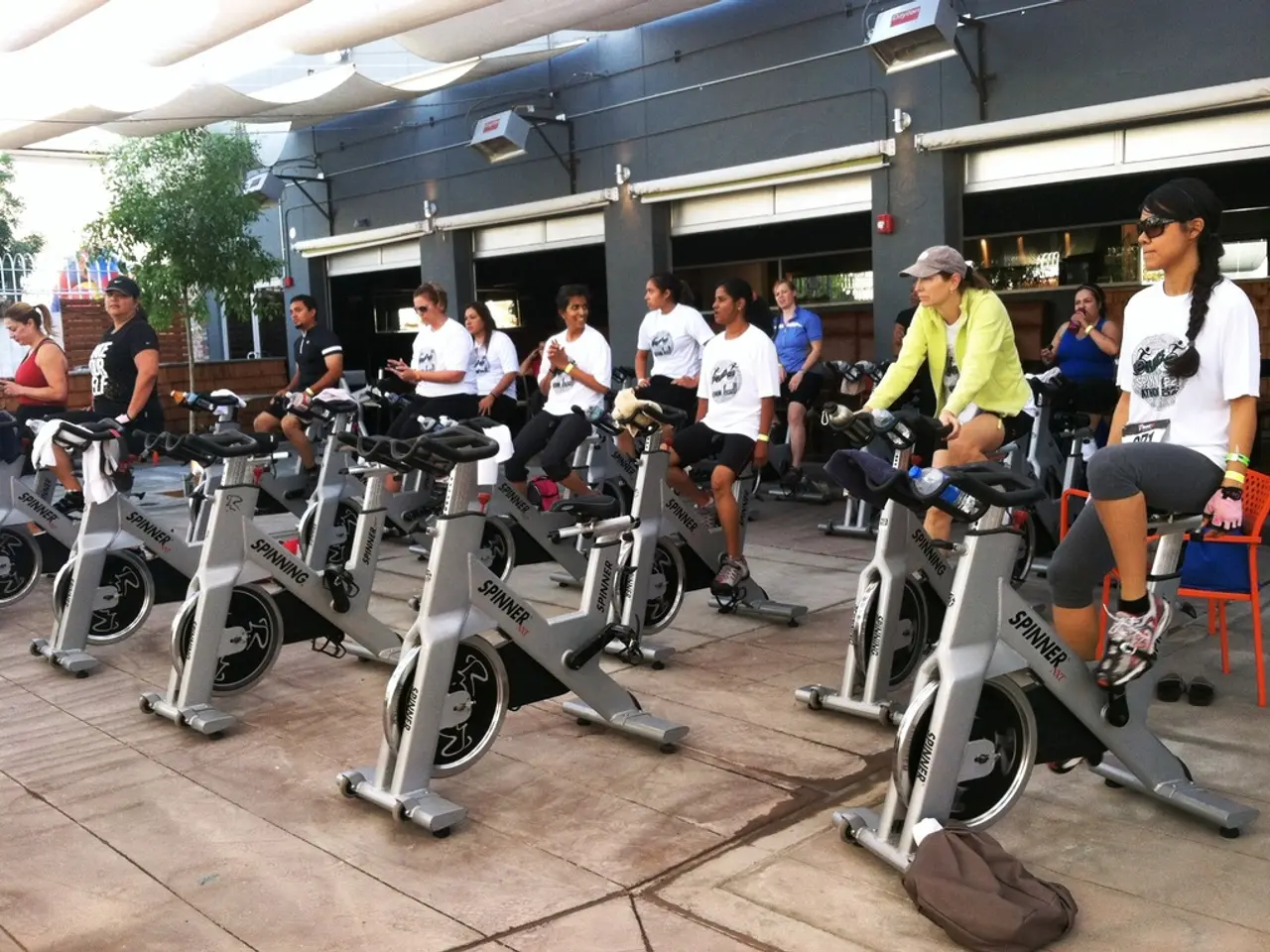Embracing a Fitness and Wellness Lifestyle: Pursuing a Life of Strength and Vitality
In today's fast-paced world, adopting a healthier lifestyle can often feel like an overwhelming task. However, by taking a holistic and personalized approach, you can integrate fitness, nutrition, mental wellness, and community support into a sustainable and balanced routine.
A key strategy for fitness is to engage in joyful, evidence-based movement that includes a balance of cardiovascular, strength, flexibility, and core stability exercises. This can be supported by professional guidance or community programs to help you stay motivated and accountable. Aim for at least 150 minutes of moderate-intensity aerobic activity per week, along with strength training exercises for all major muscle groups at least twice a week. Remember, rest days are just as important for recovery and preventing burnout.
Nutrition plays a crucial role in our overall health. Focus on mindful eating with nutrient-dense whole foods that balance macronutrients (protein, healthy fats, fiber) and reduce inflammation. Personalize your nutrition to address metabolic, hormonal, and lifestyle factors while avoiding extreme diets, emphasizing sustainability.
Mental wellness is an integral part of physical wellness. Incorporate stress management practices such as mindfulness, meditation, breathwork, cognitive behavioral therapy, or sound/spiritual healing. Engaging in hobbies, spending time with loved ones, and regular physical activity can also help reduce stress.
Community support is essential for fostering adherence, motivation, and a sense of belonging. Participate in local fitness centers, group activities, or wellness communities that foster social connection, shared goals, and a supportive environment.
Prioritizing restorative sleep, personalized supplementation where needed (guided by health assessments), and honoring a long-term perspective that values consistent, whole-person care over quick fixes or symptom-only treatments are additional essentials.
While obstacles such as time constraints, motivation, and access to resources can be common, there are solutions. Incorporate short workouts or active breaks into your day, even a 10-minute walk can be beneficial. Not everyone has access to a gym or fitness classes, so explore free online workout resources, and consider bodyweight exercises that can be done at home.
Staying motivated can be challenging, especially when results are slow to appear. Set small, incremental goals and celebrate your achievements, no matter how minor. Consistency is the key to success in any fitness and wellness journey. Remember, creating a sustainable lifestyle of fitness and wellness involves balance. Integrate healthy habits without feeling overwhelmed.
By adopting a truly holistic and personalized approach, you can embark on a journey towards a healthier, more balanced life, fostering lasting connection and balance across all domains of wellness.
- Adopting a holistic approach to lifestyle includes integrating fitness, nutrition, mental wellness, and community support.
- Fitness involves joyful, evidence-based movement, including cardio, strength, flexibility, core stability exercises, and more.
- A balanced fitness routine should include at least 150 minutes of moderate-intensity aerobic activity weekly and strength training for major muscle groups twice weekly.
- Nutrition is essential for health with a focus on mindful eating, balancing macronutrients, and reducing inflammation.
- Personalize your nutrition plan considering metabolic, hormonal, and lifestyle factors while avoiding extreme diets.
- Mental wellness entails stress management through practices like mindfulness, meditation, and cognitive behavioral therapy.
- Hobbies, loved ones, and physical activity also contribute to improving mental health.
- Community support is important for fostering motivation, adherence, and a sense of belonging.
- Quality restorative sleep, personalized supplementation where necessary, and long-term consistency are also crucial for wellness.
- Short workouts or active breaks, even 10-minute walks, can be beneficial due to time constraints.
- Bodyweight exercises or free online workout resources can be alternatives when access to resources is limited.
- Setting small, incremental goals, celebrating achievements, and maintaining consistency are key to long-term success in fitness.
- Yoga, Pilates, running, swimming, cycling, and mobility exercises can provide variety and improve endurance and muscle strength.
- Focus on wellness science and fitness-and-exercise, adopting mental-health, health-and-wellness, and lifestyle habits for overall well-being.
- A sustainable, balanced lifestyle in fitness and wellness involves implementing healthy habits without feeling overwhelmed, resulting in a healthier, more connected life.




